The Bangor Public Library and the Great Fire of 1911 Historic District
Introduction
Text-to-speech Audio
Images
The Front of the Bangor Public Library by Gregory Clancey in October of 1983, Public Domain Photo Provided by NPS
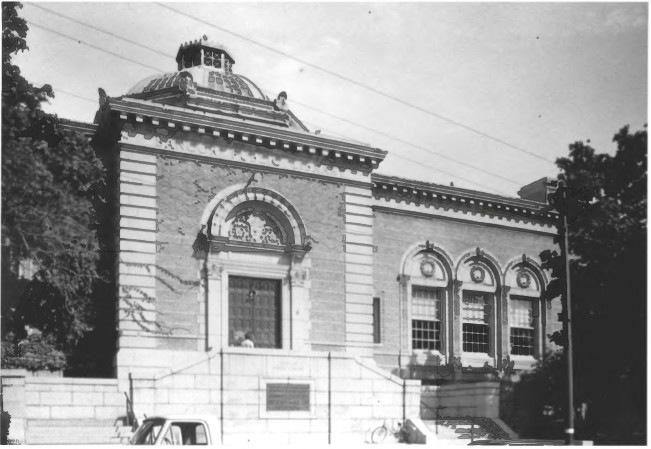
Front Door of the Public Library by Gregory Clancey in October of 1983, Public Domain Photo Provided by NPS
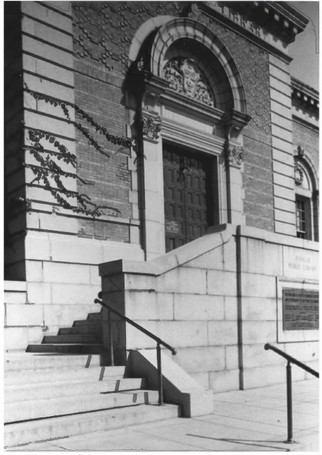
Pierce Park Next to the Library and the Tefft Statue by Gregory Clancey in October of 1983, Public Domain Photo Provided by NPS
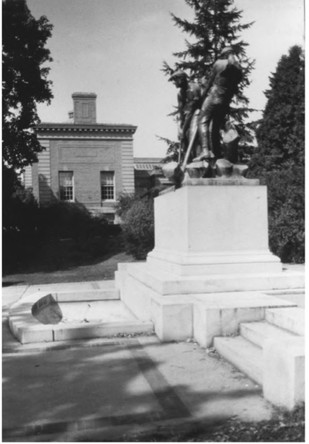
The Norumbega Mall Between Central and Franklin Sts by Gregory Clancey in October of 1983, Public Domain Photo Provided by NPS
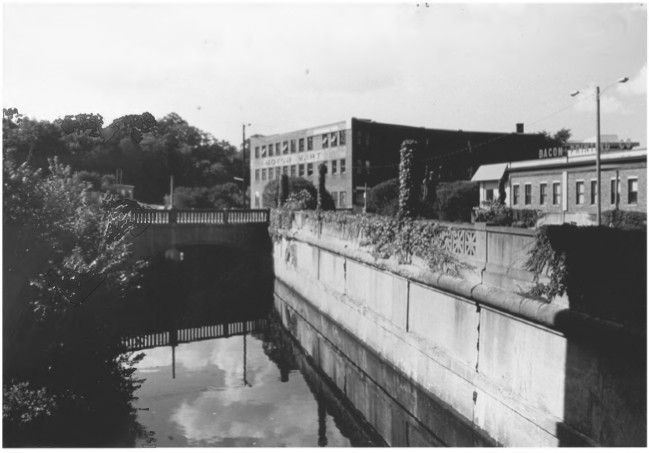
3rd View of the Morse Building in the Norumbega Mall by Gregory Clancey in October of 1983, Public Domain Photo Provided by NPS
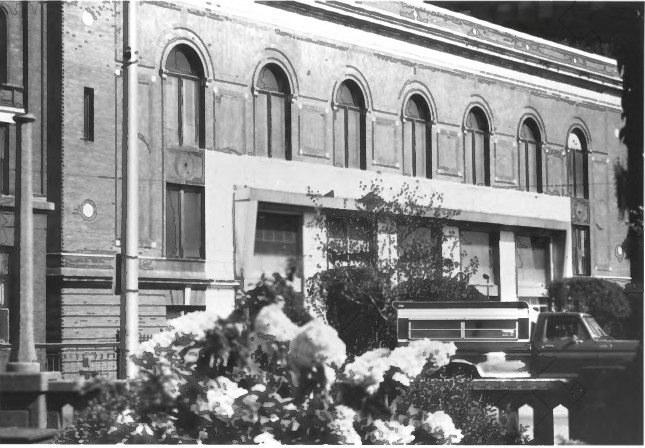
Second View of the Morse Building in the Norumbega Mall by Gregory Clancey in October of 1983, Public Domain Photo Provided by NPS
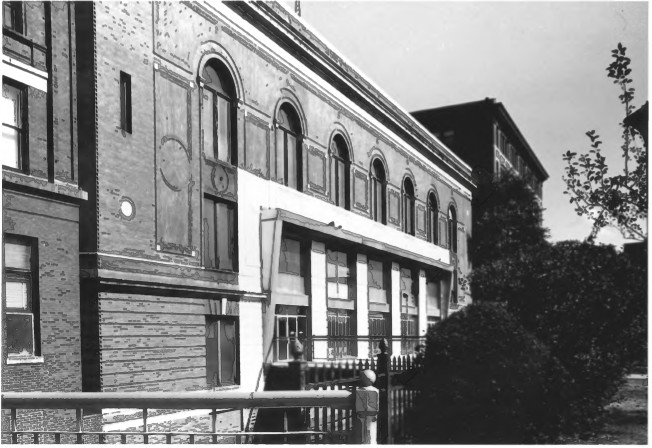
Primary View of the Morse Building in the Norumbega Mall by Gregory Clancey in October of 1983, Public Domain Photo Provided by NPS
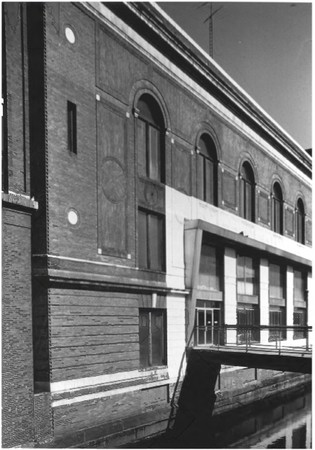
Wide Shot of the Norumbega Mall by Gregory Clancey in October of 1983, Public Domain Photo Provided by NPS
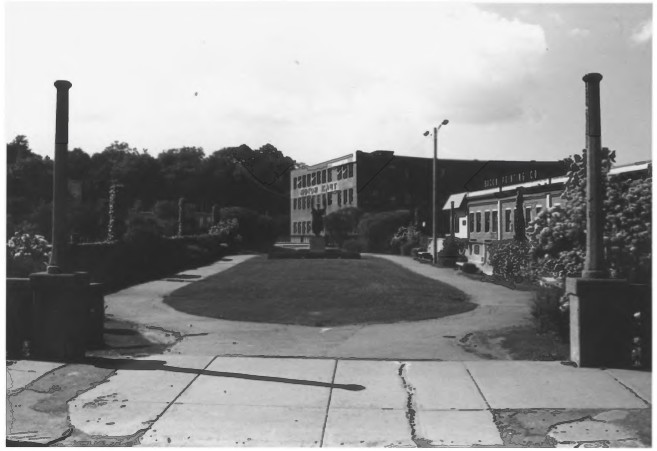
Kirstein Block by Gregory Clancey in October of 1983, Public Domain Photo Provided by NPS
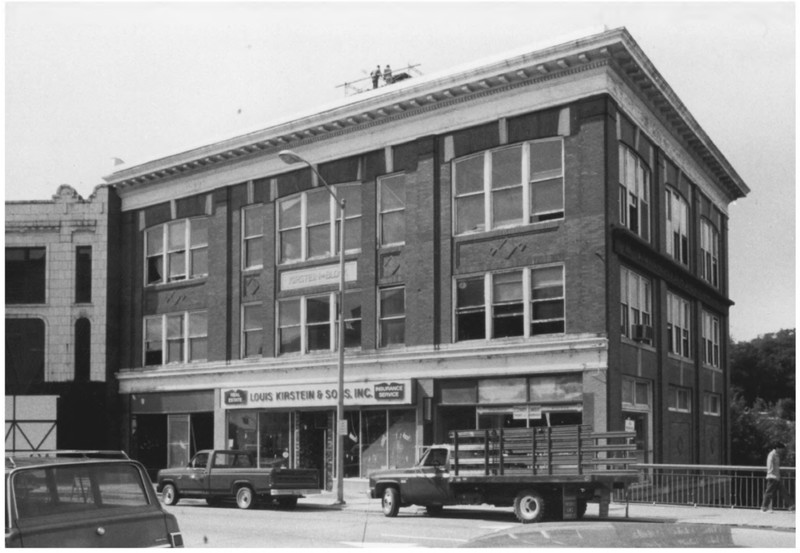
30 - 38 Central Street by Gregory Clancey in October of 1983, Public Domain Photo Provided by NPS
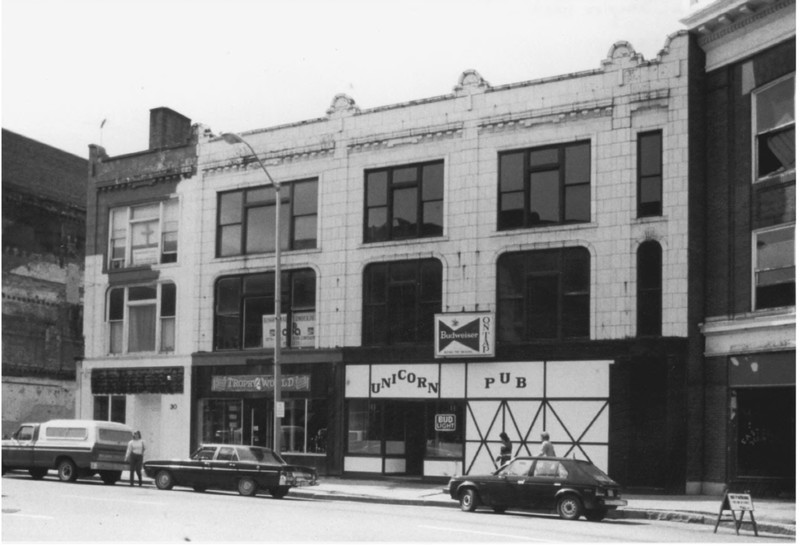
The Old Bangor Post Office and Customs House, which is now City Hall, by Gregory Clancey in October of 1983, Public Domain Photo Provided by NPS
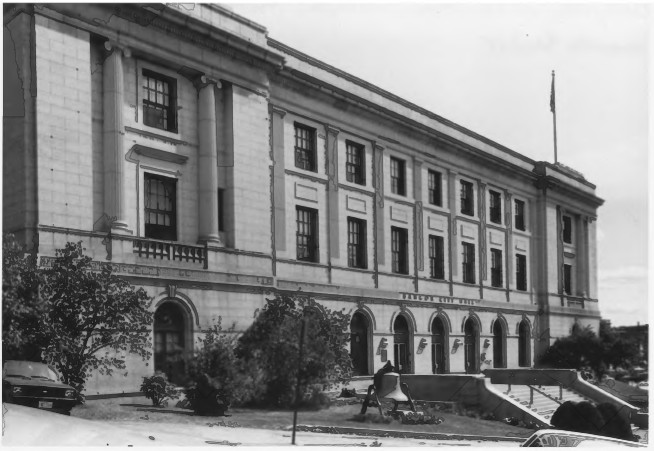
Lower State Street (numbers 16 - 22) by Gregory Clancey in October of 1983, Public Domain Photo Provided by NPS

The Eastern Trust Building on State Street by Gregory Clancey in October of 1983, Public Domain Photo Provided by NPS
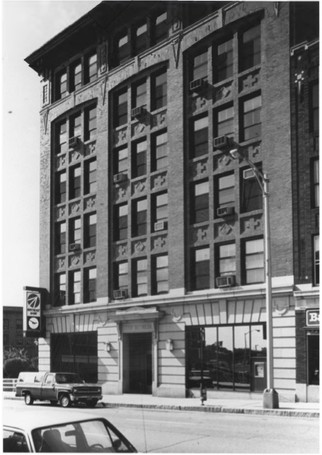
Bangor Savings Bank by Gregory Clancey in October of 1983, Public Domain Photo Provided by NPS
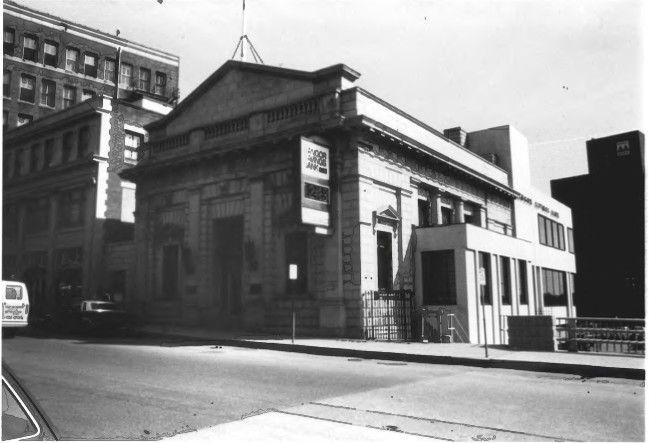
The Bangor Telephone Exchange by Gregory Clancey in October of 1983, Public Domain Photo Provided by NPS
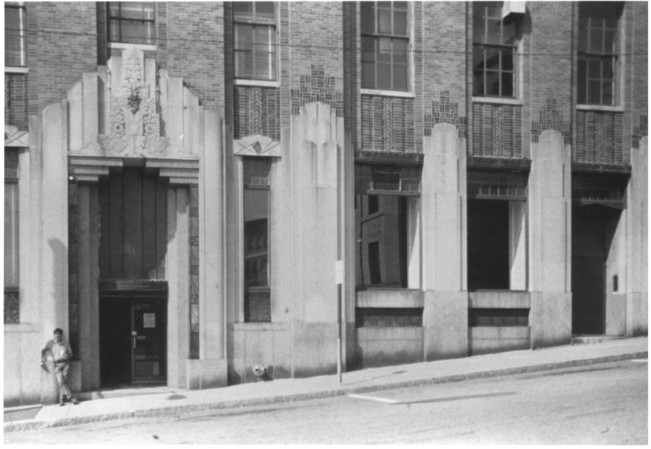
The Bangor Railway and Electric Company Power Station on Park Street by Gregory Clancey in October of 1983, Public Domain Photo Provided by NPS
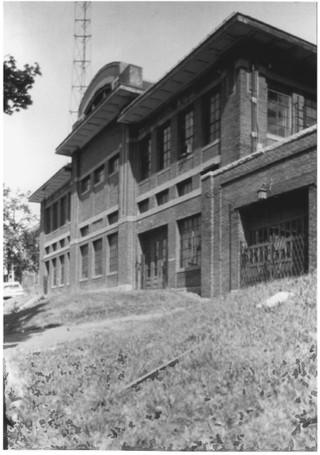
Backstory and Context
Text-to-speech Audio
In April of 1911, a riverside warehouse on the Penobscot River in Bangor caught fire, beginning what would eventually be known as the Great Fire of 1911. The fire was the worst to strike Bangor and represented the last of its kind in the state. Nearly half of Bangor’s downtown was destroyed, including nearly three hundred residences. Firefighters from as far as Portland arrived to help combat the blaze, but it raged onward. Thankfully, there were only two fatalities. The economic damage, however, was unprecedented in the area.
The Great Fire of 1911 claimed the post office, customs house, central fire station, telegraph station, the Mechanic Association Public Library, telephone exchange, and a handful of Bangor’s most prolific banks. Many of the businesses destroyed were uninsured.
The following effort to rebuild the city was remarkable, calling on the talents of designers and planners from across the nation. Many of the restored buildings still stand to this day including the court house and the new Bangor Public Library. Many of Bangor’s most prominent citizens of the time contributed their efforts to the reconstruction of the city. The first commercial building reconstructed after the fire, for example, was funded by John R. Graham, then the president of Bangor Hydro-electric Company. He went on to fund the construction of seven buildings in total, including the new post office and an innovative electrical sub-station to serve the city.
The rebuilding effort was overseen by the strong presence of the municipal government. The city called on Warren H. Manning of Boston, an accomplished architect, to design the layout of the new city center. Much of his design focused around preparing the city for the rise of the automobile, which at the time had not reached Maine in full. As a result of his foresight, Bangor was more than prepared for the ubiquity of the motorcar that came in the following decades. Manning also designed the downtown with space for a public high school and two malls that “floated” in the center of the Kenduskeag stream, the Kenduskeag Mall and the Norumbega Mall. These were designed to serve as places of natural respite amid the commercial buildings of downtown Bangor. Both of these malls remain to this day, featuring trees, gardens, and public art.
A great collection of influential architects lent their expertise to the city. Local architects credited with many of the buildings were Wilfred Mansur, Victor Hodgins, Frederick Patterson, and C. Parker Crowell. Mansur was also well-recognized for his work in the Bangor Theological Seminary Historic District. A good number of buildings were designed by out-of-state architectural firms, however, such as Peabody and Stearns of Boston, which designed the Bangor Public Library and the Old Bangor High School. Bangor Savings Bank was architected by one of the largest and most respected firms of New York, Carrere and Hastings. Cram and Ferguson architectural firm and architect Hobart Upjohn were both called upon to design churches in Bangor (the All Soul’s Congregational Church and the St. Johns Episcopal Church, respectively.)
The notable buildings of the district are explored below.
The Bangor Public Library:
The Bangor Public Library started in 1830 as a seven-book collection stored in a small chest in the offices of John S. Sayward on Exchange Street in Bangor. The chest of books served as the library of the Bangor Mechanic Association, which allowed associates to check out two books at a time for use in personal learning or the education of apprentices. Throughout the mid-1800s, the Mechanic Association expanded the library, with the most monumental expansion occurring in 1873 when the Mechanic Association merged with the Bangor Mercantile Association, who had already absorbed a number of small libraries previously. The merger of the two trade associations led to the creation of a centrally located library known as the Bangor Mechanic Association Public Library.
The Bangor Mechanic Association Public Library would, shortly after the merger, become a part of something much larger. The Honorable Samuel F. Hersey left the City of Bangor a sum of one-hundred thousand dollars following his death in 1883. Hersey’s will indicated that the fortune was to be used “for the promotion of education, and the health and good morals of citizens” (quoted verbatim from the Bangor Public Library’s public history page.) Following a vote by the Bangor City Council, the funds were set aside in full to be used to create a large public library that would be accessible to all citizens of the Bangor area. Overseeing the creation of the library was a board of trustees consisting of the Mayor of Bangor, the treasurer of the city, and three elected citizens. This board would come to be known as the Trustees of the Hersey Fund.
The Trustees, hoping to start the public library off with a strong beginning, reached out to the Bangor Mechanic Association. Shortly after, the two groups re-organized into the Bangor Public Library, which would incorporate the Mechanic Association’s burgeoning library (containing then nearly twenty-thousand texts.) The Mechanics Association contributed an additional twelve thousand dollars which were combined with Hersey’s one-hundred thousand to form a sizeable endowment for the library. The new management of the Bangor Public Library consisted of the Trustees and four elected officers from the Bangor Mechanic Association. This leadership remains largely intact today, with the exception that the Mayor no longer by default sits within the Trustees of the Hersey Fund.
Membership to the Bangor Public Library became completely free in 1905 and was housed in Bangor’s business district until the disastrous Great Fire of 1911. The Great Fire nearly destroyed the library in whole. At the time of the fire, the Bangor Public Library consisted of approximately seventy-thousand texts. Following the fire, less than two thousand remained.
Plans were drawn up to rebuild and restore the library to its former glory in mid-1912. Working with a Boston architectural firm known as Peabody and Stearns, the Board of the Managers of the Bangor Public Library set out to create an educational district within the City of Bangor. In cooperation with the city governance, Peabody and Stearns designed a district that would contain Bangor High School and the Bangor Public Library, two public parks, and a new post office and court house. Construction began shortly afterward, and was completed in December of 1913.
Since 1913, the Bangor Public Library has grown to surpass its previous size and now serves not only as a library but as a museum and home for many of Bangor’s public education initiatives. The Bangor Public Library houses a large computer lab and is the home of numerous historical artifacts, including items owned by Vice President Hannibal Hamlin, a Maine native.
The Norumbega and Kenduskeag Malls:
These wide plazas “float” in the center of the Kenduskeag Stream, elevated above the water. The Norumbega mall now contains a WWI memorial statue, and the Kenduskeag Mall contains a statue of United States Vice President Hannibal Hamlin, a Maine native. Both malls are designed in the Classical Revival architectural style. The Norumbega and Kenduskeag Malls represent a forward-thinking effort by Boston architect Warren H. Manning to build spaces for public respite within the compact city center.
The Morse Building:
Designed by Bangor architect Victor Hodgins, the Morse building is a Renaissance Revival styled building made with pressed red brick. It is one of the smaller buildings contained in the district. It was remodeled in 1955 by Sears Roebuck and Company.
Pierce Park:
A park directly next to the public library, Pierce Park contains Renaissance Revival architecture and a bronze statue mounted on a high pedestal. The statue depicts a group of loggers working together and was carved by Charles A. Tefft of Bangor’s twin city, Brewer.
Bangor High School:
Designed by Peabody and Stearns, a notable architectural firm headquartered in Boston, the original location of Bangor High School is now a part of the public library. It is topped by a grand copper roof that contains a glass and copper dome. This building is styled in the Renaissance Revival style, and the interior has been well preserved.
Bangor Railway and Electric Company Sub-Station:
Designed by the respected New York firm of Jardine, Kent, and Hill in 1912, this building served as a cornerstone for the spread of electricity through the City of Bangor. Following the fire, the rebuilding efforts in Bangor led to the city having one of the highest ratios of lightbulbs-to-citizens at the time.
Telephone Exchange:
A seven-and-a-half story building built in 1931, the Bangor Telephone Exchange is unique in that it is one of the few Art Deco style buildings in the city. The lobby of the Telephone Exchange has been well preserved.
First National Bank Building and the Bangor Hydro Building:
Built in 1915 to designs by Bangor architect Wilfred Mansur, the Bangor Hydro Building is a Classical Revival style building featuring large columnns and pressed brick façade. The interior has been preserved.
Nichols, Stetson, Sterns, and Hall Blocks:
Located on exchange street, these three commercial blocks are designed largely in the Romanesque Revival styles with brick exteriors. Bangor architect Wilfred Mansur designed all four blocks.
Post Office (City Hall):
Designed by the Supervising Architect of the U.S. Treasury Oscar Wenderoth in 1914, the new post office of Bangor, Maine was built in the Classical Revival style of architecture. This building now serves as the City Hall of Bangor.
Within the district, there are a number of other buildings that are either unnamed or contain little notable history other than their design. These buildings have been omitted from this article, though they are documented in the National Park Service paperwork for the district.
Sources
NPS NRHP Photographs for the District. National Park Service. June 14, 1984. Accessed September 03, 2017. https://npgallery.nps.gov/GetAsset/22ca2d85-fb77-4898-aa36-cdc45cb35dbd. Official NPS NRHP Nomination Photographs for the District and the Library
History of the Library. Bangor Public Library. Accessed September 03, 2017. https://www.bpl.lib.me.us/history/. Official Website of the Library. Hours and Phone Number Were Sourced Here Also.
Sovis, Emilie V. The Bangor Theological Seminary Historic District. The Clio. August 27, 2017. Accessed September 03, 2017. https://www.theclio.com/web/entry?id=44989. Another Clio Entry Created by the Same Author That Contains Information on Wilfred Mansur, Architect
